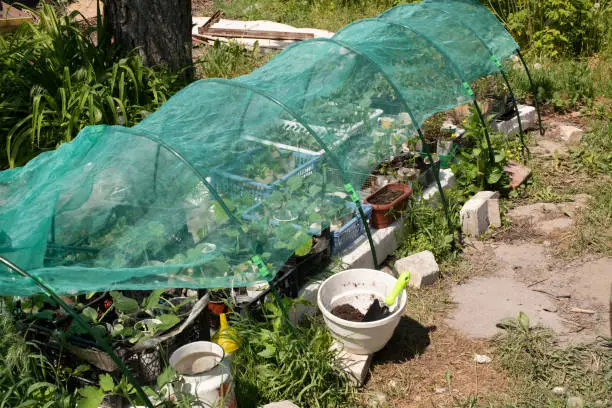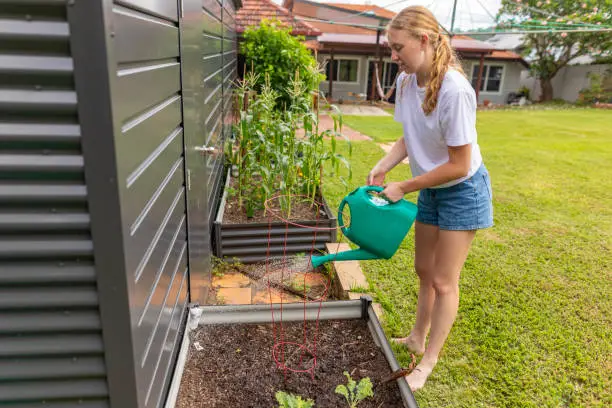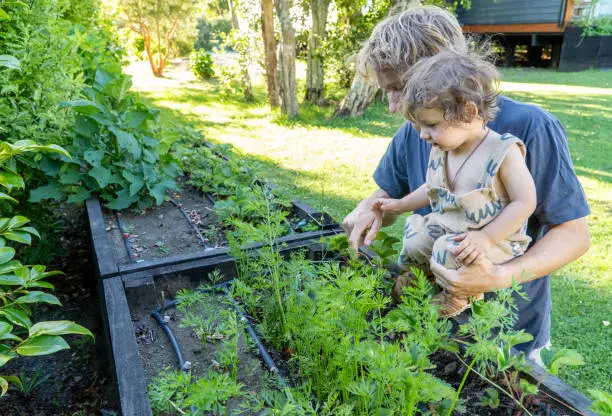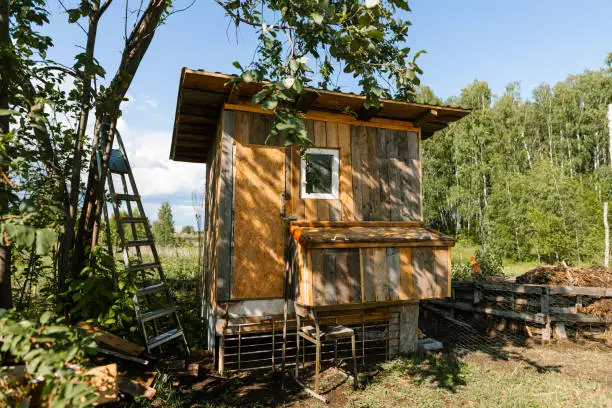Do you want to start a backyard homesteading beehive? Sweet! Start immediately and get those bees humming.
Choose the right site for your hive initially. Like real estate—location, location, location! Bees like some sunlight but not too much. Locate a sunny place with a midday shadow. They shouldn’t roast out there.
After choosing a location, select a hive type. Langstroth hives are classics for a reason. They are user-friendly and extensively utilized, making components and guidance accessible. Top bar hives are more natural yet more challenging for beginners.
Talk gear. No one wants to get stung, so wear a bee suit and gloves. Use a smoker to calm the bees when dealing with them. Your best companion for ripping frames apart and removing wax is a hive tool.
Do your research on local rules before getting bees. Some places limit the number of hives or their distance from property lines. Contact local authorities or beekeeping associations.
Joining an association can be very helpful. Expert beekeepers will give you advice and answer questions you didn’t know you had.
Package or nuc bees are usually available when ordering bees. Package bees have a queen and worker bees in a box, while nucs are small startup hives with brood and honey on frames.
Spring is the finest time to start a hive because flowers bloom and nectar abounds. After receiving your bees, gently move them into their new habitat per the provider’s instructions.

Since they have no food, your new colony must be fed. Sugar syrup works well; dissolve sugar in water. Fill hive feeders for easy access.
Although self-sufficient, bees need regular check-ins from their human landlords—you! In warm months, examine the hive weekly or twice for disease or pests like varroa mites, which can kill bees.
Honey—the golden nectar everyone loves—will be your reward if all goes well by late summer or early fall. Harvesting honey requires removing frames with capped honeycomb and using extractor equipment to spin frames around and release honey—like spinning salad greens dry!
Always leave enough honey behind, so they have food reserves in winter when flowers aren’t blooming as much, reducing nectar outside hives and keeping colonies alive and healthy until next spring.
Winter prep involves insulating hives, wrapping tar paper around the exterior, blocking gusts, reducing drafts entering bottom entranceways, and adding mouse guards to prevent rodents from seeking warmth, shelter in cozy confines, and disrupting peace and harmony!
The best hive location is sunny with noon shade to avoid overheating. Choose from user-friendly Langstroth or natural but difficult top-bar hives. Bring a bee suit, gloves, smoker, and hive tool.
Check local laws and join a beekeeping association for support. Bees can be purchased as packages or NUCs. Spring is suitable for hive setups because flowers give nectar. Help your new colony settle by feeding sugar syrup.
Hives must be inspected regularly to detect illnesses and varroa mites. Honey can be harvested in late summer or early fall if all goes well. Spin honey from frames with an extractor, leaving enough for winter bees. Insulate the hive and add mouse guards for winter.
Honey Harvesting: Beeswax Wonders and Sweet Rewards
Honeycomb glows golden on a sunny afternoon with bees buzzing happily. Your backyard beekeeping fantasy has come true. But how do you get honey from hive to jar? Welcome to the sticky, delicious process of gathering honey and beeswax at home.
First, get the correct gear. Imagine preparing for war against bee stings! A decent beekeeping suit protects you, and gloves and a veil protect your face and hands. I promise you’ll thank yourself later for not rubbing imaginary bee stings.
Let’s discuss timing. The bees work hard during spring and summer collecting nectar. The frames should be full of honey by late summer or early fall. Let them finish filling those combs before jumping in.
Smoke them when harvesting! Use a bee smoker instead. A few breaths conceal bee alarm pheromones, calming them. It’s like a spa day as you plunder their pantry.

Take the frames from the hive carefully. This is like opening presents on Christmas morning if hundreds of tiny insects were mad at you for stealing their food.
With frames, head to your extraction area—a clean, contaminant-free location is essential. Using a knife or fork, scrape off the wax cappings sealing each honey-filled cell. It feels like peeling scorched skin but is less disgusting.
Honey extraction is fun next! Put those uncapped frames in an extractor, a giant centrifuge that forces honey from the combs. Imagine an accelerated washing machine filled with liquid gold instead of clothing.
After spinning off all that tasty nectar, strain it through a fine mesh screen or cheesecloth to remove wax and bee detritus. Gravity will flow pure honey into your collection container.
On to bottling! Pour liquid sunlight into sterilized jars or bottles with a funnel to avoid sticky messes—you’ll feel like an alchemist transferring nature’s wealth into sweets!
Don’t throw away those wax remnants! Beeswax has several household uses besides candles. Melt leftover cappings in a double boiler until totally liquefied; strain again if needed before pouring into molds for cooling solidification!
Make lip balm by mixing melted beeswax with coconut oil and essential oils—your lips will thank you throughout the winter chaps galore season. You can also buff wooden surfaces with equal parts melted wax and olive oil to shine!
Are you feeling crafty? To reduce plastic waste at mealtime, make reusable food wraps by dipping fabric squares in molten beeswax and using them to cover plates and sandwiches.
Here are the steps for gathering honey and using beeswax at home! Whether you’re making sweet treats or eco-friendly items from wax scraps,
Protect yourself from stings with a beekeeping suit, gloves, and veil. Use a bee smoker to quiet bees in late summer or early fall to harvest honey. Carefully move frames from the hive to a clean extraction place. Uncap the honey-filled cells with a knife or fork, then spin out the honey with an extractor. Strain honey through a fine mesh and bottle it in sterile containers.
Keep the wax! Melt remaining cappings in a double boiler, strain, and solidify in molds. Mix melted beeswax with coconut oil and essential oils to make lip balms or reusable food wrappers to reduce plastic waste. Beeswax is a versatile byproduct of honey production that can polish wood.be near your home.





Leave a Reply
You must be logged in to post a comment.